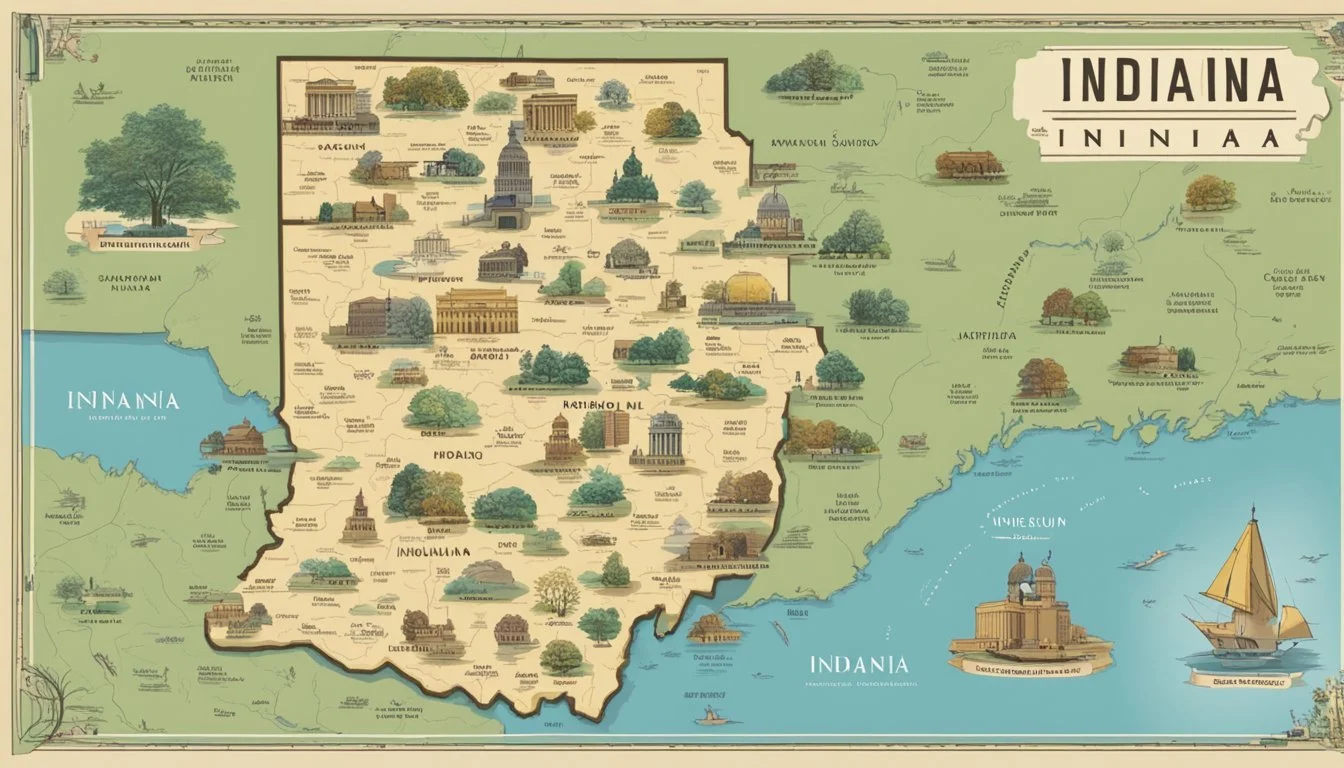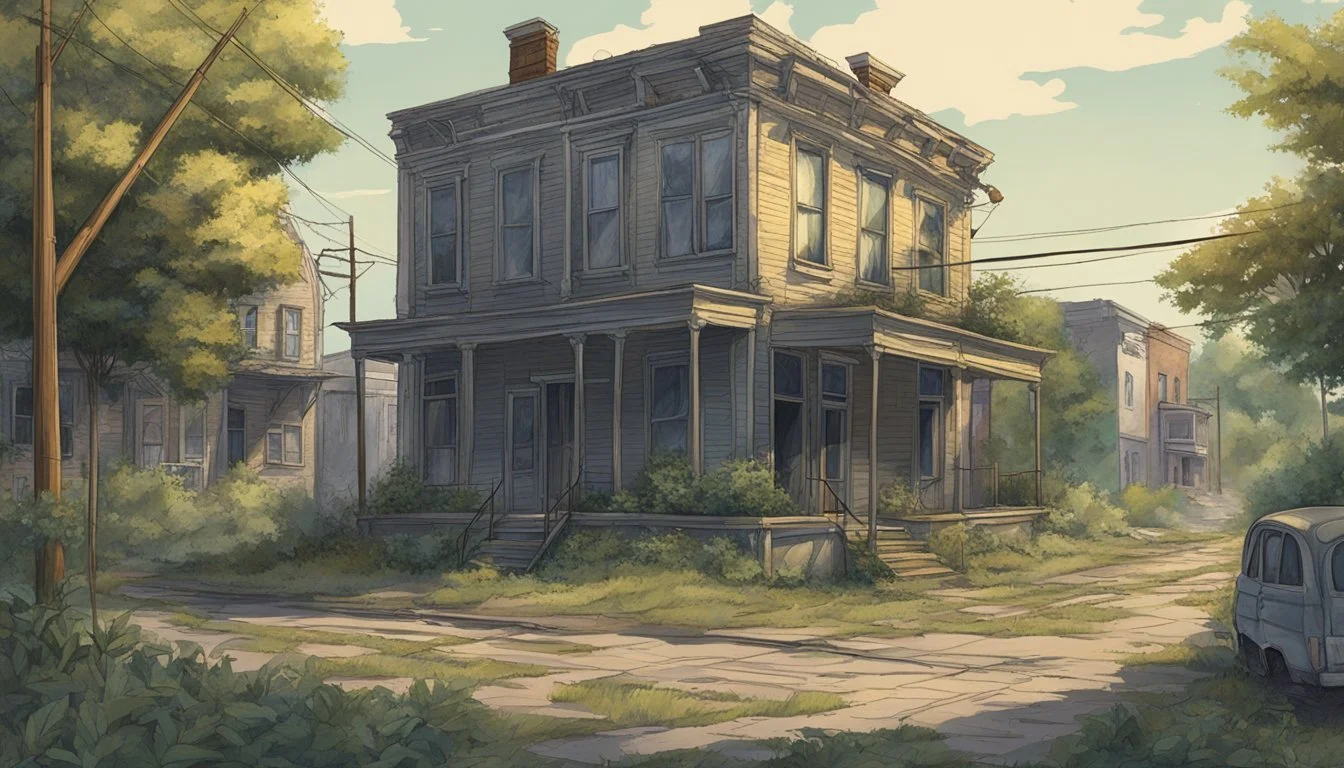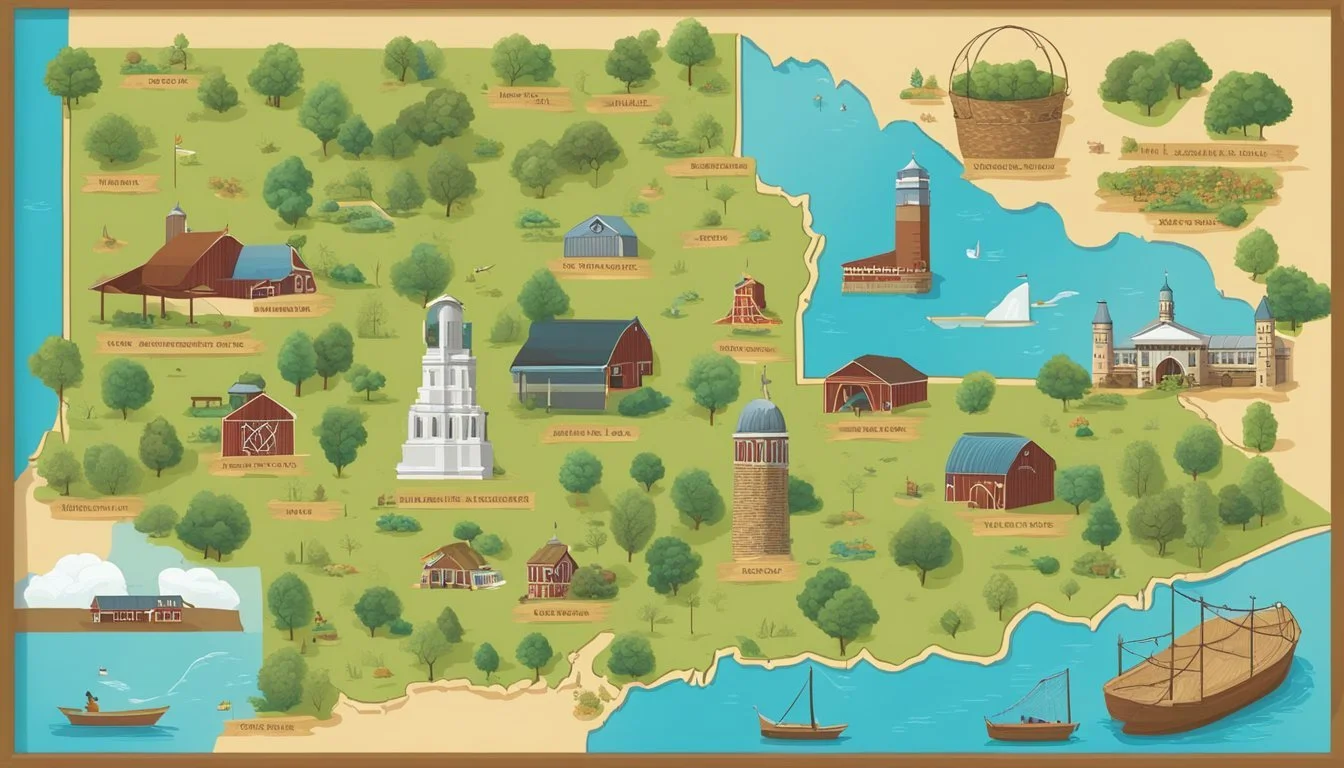8 Thought-Provoking Documentaries About Indiana
Unveiling the Hoosier State's Hidden Stories
Indiana's rich history and diverse landscapes provide fertile ground for documentary filmmakers. From bustling cities to rural farmlands, the Hoosier State offers compelling stories waiting to be told through the lens of talented creators.
These eight thought-provoking documentaries about Indiana shed light on the state's unique culture, challenges, and triumphs. Viewers can expect to gain fresh perspectives on environmental issues, social dynamics, and hidden gems across Indiana's varied regions. Through intimate portraits and sweeping aerial views, these films capture the essence of the state and its people.
1) 'Hoosiers: The Life of Indiana High School Basketball'
This documentary explores the cultural phenomenon of high school basketball in Indiana. It delves into the true story that inspired the beloved film "Hoosiers" and its lasting impact on the state's basketball culture.
The film examines the 1954 Milan High School basketball team's improbable state championship victory. This small-town underdog story became the basis for the fictional Hickory Huskers in "Hoosiers."
Viewers gain insight into the real-life Coach Marvin Wood, who led Milan to victory at just 26 years old. The documentary contrasts his story with the fictional portrayal of Norman Dale in the movie.
Indiana's deep-rooted passion for basketball takes center stage. The film showcases how the sport intertwines with community identity and pride across the state.
Through interviews and archival footage, the documentary captures the excitement of Indiana's single-class tournament system. It highlights how this format allowed small schools to compete against larger urban programs on equal footing.
The film also explores how "Hoosiers" has shaped perceptions of Indiana basketball both within and outside the state. It examines the movie's enduring popularity and its role in perpetuating basketball fever in Indiana.
2) 'Medora: Small Town, Big Dream'
'Medora' chronicles the struggles of a high school basketball team in rural Indiana. The documentary follows the Medora Hornets as they face a prolonged losing streak and fight to keep their small-town identity alive.
Set against the backdrop of economic hardship, the film explores themes of perseverance and community spirit. The Hornets compete against much larger schools, embodying the underdog spirit that resonates with many viewers.
Directors Andrew Cohn and Davy Rothbart spent a year living in Medora to capture the authentic experiences of the players and townspeople. Their intimate approach provides a window into the challenges faced by rural communities across America.
The documentary garnered attention after being inspired by a New York Times article about Medora's struggles. It successfully raised funds through Kickstarter, demonstrating public interest in the story of this small Indiana town.
'Medora' offers a poignant look at the intersection of sports, economics, and small-town life. It showcases the resilience of a community refusing to give up hope despite facing significant obstacles.
3) 'The Mounds: Ancient Masterpieces of Indiana'
'The Mounds: Ancient Masterpieces of Indiana' explores the fascinating earthworks scattered across the Hoosier State. This documentary sheds light on the prehistoric Native American cultures that constructed these remarkable structures.
The film takes viewers on a journey to sites like Angel Mounds Historic Site and Mounds State Park. It examines the intricate designs and potential purposes of these ancient structures, which range from burial grounds to celestial observatories.
Archaeologists and historians provide insights into the Adena and Hopewell cultures. These societies are believed to have built many of Indiana's mounds between 250 BC and 200 AD.
The documentary also highlights ongoing preservation efforts. It explores the challenges of protecting these archaeological treasures in the face of modern development and natural erosion.
Viewers learn about recent discoveries, including excavations that have unearthed ancient tools and extinct animal remains. These findings offer new perspectives on Indiana's prehistoric inhabitants and their ways of life.
4) 'Gary, Indiana: A Tale of Urban and Industrial Decline'
Gary, Indiana, once hailed as the "City of the Century," has become a stark example of urban and industrial decline. Founded in 1906 by U.S. Steel, the city rapidly grew into a thriving industrial hub.
At its peak, Gary boasted a population of over 178,000 residents in the 1960s. The city's fortunes were closely tied to the steel industry, which provided jobs and economic stability for decades.
However, the latter half of the 20th century brought significant challenges. Automation in the steel industry led to job losses, while economic shifts and globalization further impacted Gary's industrial base.
The city's population has dramatically decreased since its peak. By 2019, nearly 20 percent of single-family homes in Gary were unoccupied, reflecting the extent of the city's decline.
Gary's story is also intertwined with issues of race and socioeconomic disparities. As jobs disappeared, many white residents left the city, while the African American population faced limited options for relocation.
Today, Gary stands as a poignant reminder of the challenges faced by many industrial cities in the United States. Its abandoned buildings and vacant lots serve as a backdrop for discussions about urban planning, economic diversification, and community resilience.
5) 'Crossroads: The History of Transportation in Indiana'
This documentary explores Indiana's rich transportation history and its evolution into the "Crossroads of America." It traces the development of roads, railways, and waterways that shaped the state's economy and culture.
The film highlights Indiana's strategic location at the intersection of major east-west and north-south routes. It examines how the state became a crucial hub for national transportation networks in the 19th and 20th centuries.
Viewers learn about the construction of the National Road, which connected Indiana to the East Coast in the early 1800s. The documentary also covers the rapid expansion of railroads across the state, transforming Indiana into a key rail junction.
The rise of the automobile age receives significant attention. The film details how Indiana adapted its infrastructure to accommodate cars and trucks, leading to the creation of an extensive highway system.
Interviews with historians and transportation experts provide insights into the economic and social impacts of these developments. The documentary uses archival footage and photographs to bring Indiana's transportation history to life.
6) 'The World's Greatest Game: A Hoosier Celebration'
'The World's Greatest Game: A Hoosier Celebration' shines a spotlight on Indiana's deep-rooted basketball culture. This documentary explores the state's passion for the sport and its impact on local communities.
The film features interviews with legendary players, coaches, and fans who share their personal connections to Indiana basketball. It showcases iconic high school gymnasiums and historic game footage, highlighting the sport's significance in the Hoosier State.
Viewers gain insight into the 1954 Milan High School championship that inspired the movie "Hoosiers." The documentary includes rare 16-mm film of the famous Milan-Muncie Central game, offering a glimpse into this pivotal moment in Indiana sports history.
The film examines how basketball has become intertwined with Indiana's identity. It explores the sport's role in small towns and cities alike, demonstrating its unifying power across the state.
'The World's Greatest Game' captures the excitement of high school tournaments and the dedication of players and fans. Through compelling storytelling, it reveals why basketball holds such a special place in the hearts of Hoosiers.
7) 'Erased as a Place: Lost Towns of Indiana'
'Erased as a Place: Lost Towns of Indiana' explores the forgotten communities that once thrived across the Hoosier State. The documentary sheds light on towns like Hindostan Falls, which vanished despite its promising start as a frontier settlement.
The film examines the factors that led to the decline of these lost towns. Economic changes, natural disasters, and shifts in transportation routes all played roles in their disappearance.
Viewers are taken on a journey through time, with archival footage and photographs bringing these ghost towns to life. Interviews with historians and descendants of former residents provide personal insights into the communities' histories.
The documentary also highlights efforts to preserve the memories of these lost places. It showcases archaeological digs and restoration projects aimed at uncovering and protecting remnants of Indiana's past.
'Erased as a Place' serves as a poignant reminder of the transient nature of human settlements. It invites viewers to reflect on the ever-changing landscape of Indiana and the stories hidden beneath its surface.
8) 'Modern Hoosiers: Innovation in the Midwest'
'Modern Hoosiers: Innovation in the Midwest' showcases the entrepreneurial spirit and technological advancements emerging from Indiana. This documentary explores how Hoosiers are transforming traditional industries and creating new ones.
The film highlights innovative startups in Indianapolis, Bloomington, and other tech hubs across the state. It features interviews with founders, investors, and community leaders driving Indiana's innovation ecosystem.
Viewers learn about cutting-edge research at Indiana universities, including breakthroughs in life sciences, advanced manufacturing, and agricultural technology. The documentary also examines how established companies are adapting to stay competitive in the digital age.
'Modern Hoosiers' celebrates the state's growing reputation as a Midwest innovation center. It showcases success stories of homegrown businesses that have scaled nationally and internationally.
The film addresses challenges faced by entrepreneurs in Indiana, such as access to capital and talent retention. It explores initiatives aimed at fostering a more inclusive innovation economy across urban and rural areas.
Through compelling stories and data, 'Modern Hoosiers' demonstrates how innovation is shaping Indiana's economic future and changing perceptions of the state.
Historical Context of Indiana Documentaries
Indiana's documentary filmmaking has deep roots in the state's history and culture. Filmmakers have captured important events, people, and stories that shaped the Hoosier state over many decades.
Early Filmmaking in Indiana
Indiana's film history dates back to the early 20th century. Silent films were produced in the state as early as the 1910s. The 1920s saw a rise in educational and industrial films made by companies like Ball Brothers in Muncie. These early works documented factories, schools, and local events.
In the 1930s and 1940s, government agencies created documentaries about Indiana's agriculture, natural resources, and social programs. The Indiana University Audio-Visual Center, established in 1938, became a hub for educational film production in the Midwest.
Influential Documentary Makers
Several notable filmmakers emerged from Indiana in the mid-20th century. Robert Flaherty, born in Michigan City, directed groundbreaking documentaries like "Nanook of the North" (1922). His work influenced generations of documentary filmmakers.
Jerry Barrish, an Indianapolis native, produced social issue documentaries in the 1960s and 1970s. His films explored topics like civil rights and poverty in Indiana. In recent decades, filmmakers like Ted Green have created in-depth historical documentaries about significant Hoosiers and events.
Public television has played a crucial role in Indiana documentary production. WFYI in Indianapolis has produced series like "Hoosiers: The Story of Indiana," exploring the state's 200-year history through personal stories.
Cultural Narratives Explored
Indiana's rich tapestry of stories and experiences comes to life through documentaries that capture the state's unique cultural identity. These films shed light on the diverse perspectives and values that shape Hoosier communities.
Impact on Local Communities
Documentaries like "Monrovia, Indiana" offer intimate glimpses into small-town life. The film showcases local businesses such as Hot Rod's Barber Shop and Dawg House Pizza, highlighting their role in community bonding. These portrayals reveal the tight-knit nature of rural Indiana towns.
Urban areas also feature prominently in Indiana's documentary landscape. The Indy Film Fest serves as a platform for showcasing local stories and fostering cultural exchange. This event brings together filmmakers and audiences, stimulating discussions about Indianapolis's evolving identity.
Indiana Humanities' Unearthed initiative explores Hoosiers' connections to their environment. These films capture stories from Lake Michigan's shores to central Indiana's farmlands, illustrating the diverse relationships people have with the land.
Role of Indiana in National Context
Indiana's documentaries often reflect broader American values and experiences. Films produced through initiatives like INseparable examine urban-rural dynamics, contributing to national conversations about community identity.
The state's agricultural heritage features prominently in many documentaries. These films showcase Indiana's role in the country's food production and rural economy, offering insights into the challenges and triumphs of Midwest farming communities.
Indiana's industrial history also plays a significant part in its documentary narratives. Films exploring the state's manufacturing legacy highlight its contributions to American industry and the ongoing impact of economic shifts on local communities.









